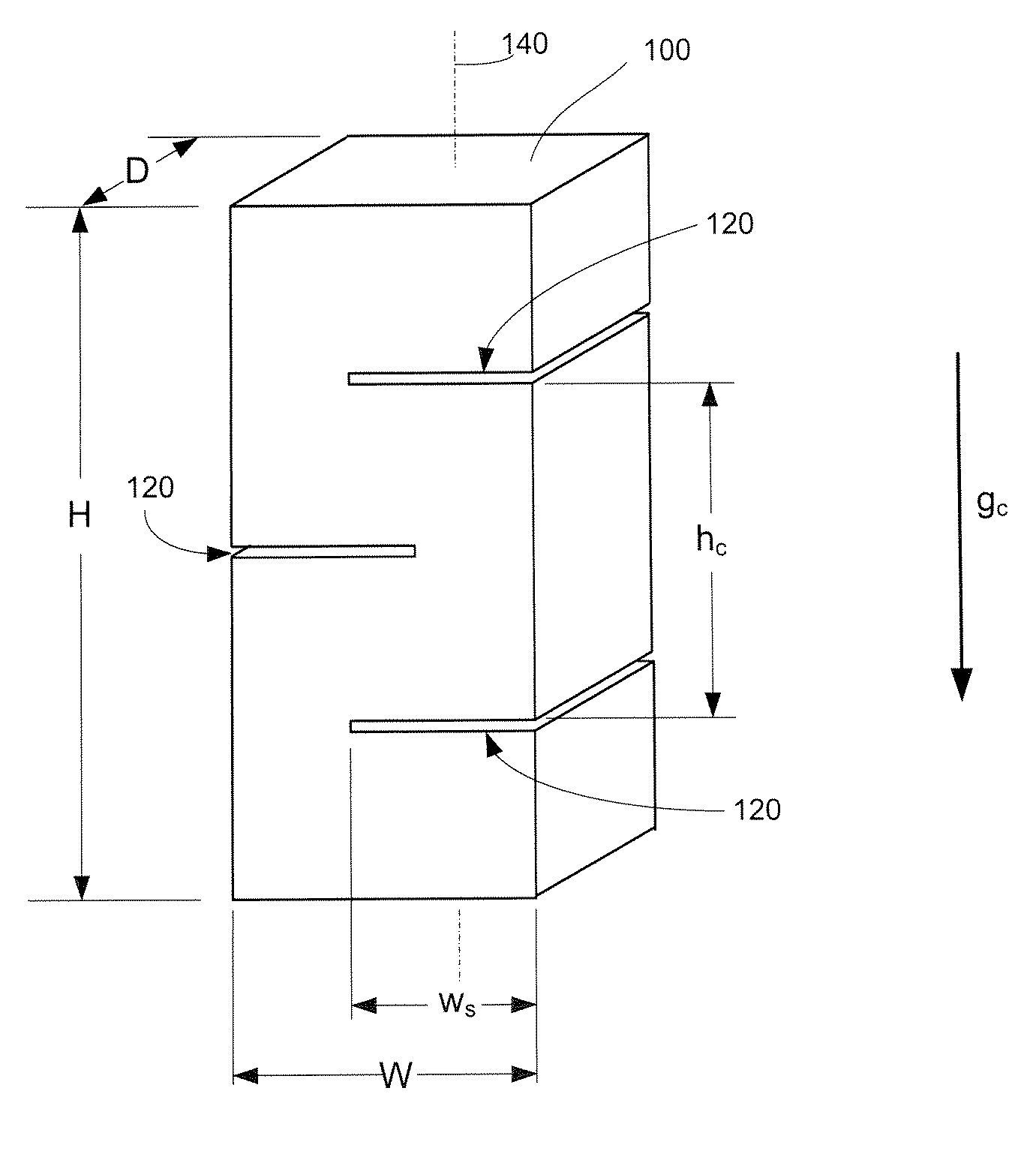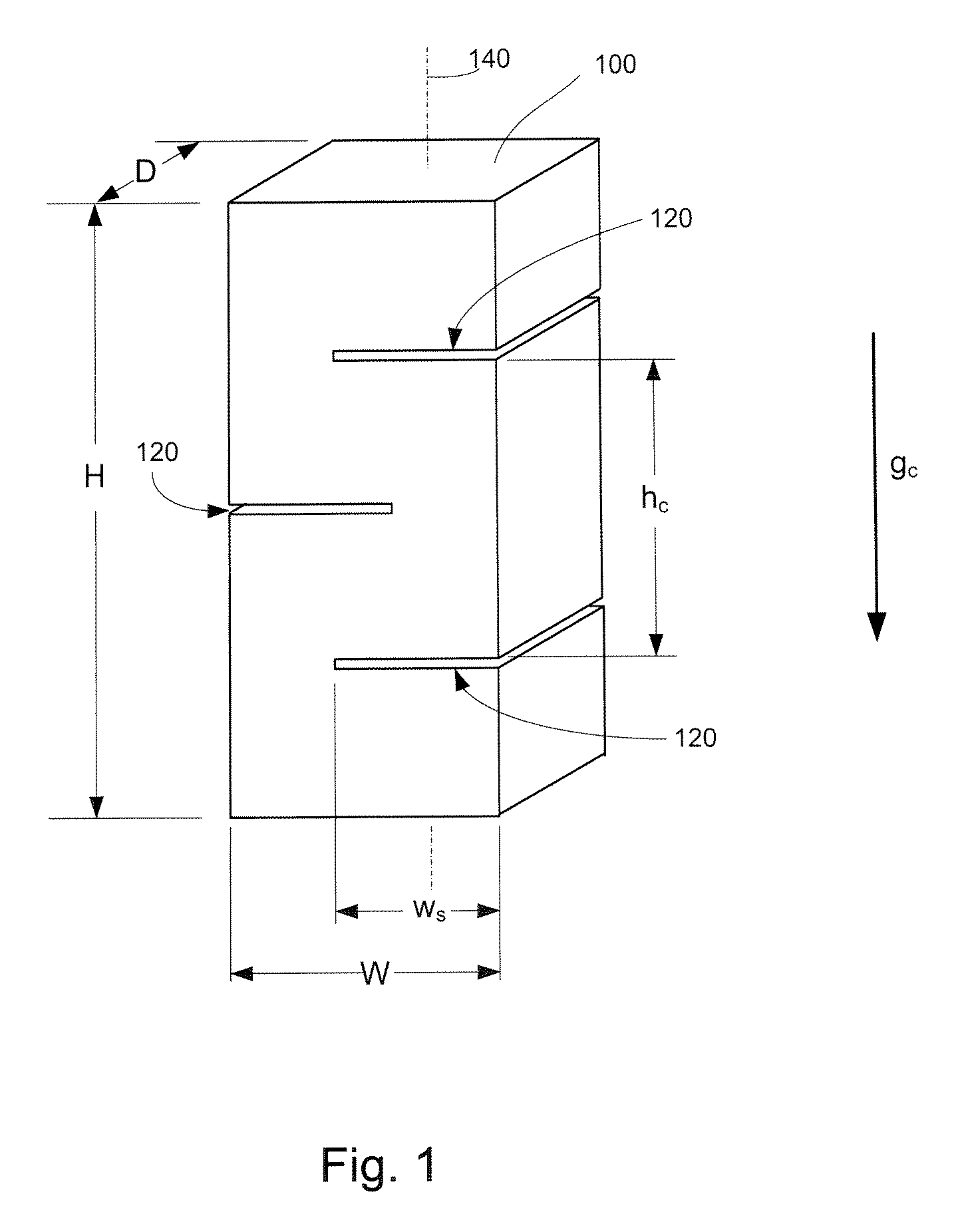Rapid Release and Anti-Drip Porous Reservoirs
a porous reservoir, rapid release technology, applied in the direction of liquid handling, tobacco, separation processes, etc., can solve the problems of limiting the usefulness of prior art reservoirs, low dissolution rate, or low dissolution rate, etc., to achieve the effect of enhancing dissolution and transport volum
- Summary
- Abstract
- Description
- Claims
- Application Information
AI Technical Summary
Benefits of technology
Problems solved by technology
Method used
Image
Examples
example 1
[0046] A cylindrical bonded bicomponent polyolefin fiber reservoir structure with nominally 85% void volume, about 70 mm long and about 24 mm in diameter with a 4 mm diameter hole through its longitudinal center was made. The reservoir shape was formed in a die under length-oriented tension using steam as the heating medium, and then cut to length. The reservoir was elastic enough to recover completely from a 5% extension. The external diameter of the reservoir was sized to fit into the neck of a typical spray bottle. The diameter of the channel or hole of the reservoir was sized to accommodate the 4 mm o.d. dip tube of a typical household cleaner spray nozzle. The capillary strength of the reservoir was sufficient to hold about 17 grams of a cleaner concentrate solution. The reservoir included partial thickness slits (i.e., lateral indentations having essentially zero height) along the length of the reservoir alternating on each side with 5 mm spacing between slits. The slit depth ...
example 2
[0050] The reservoir of Example 1 was stretched beyond a yield point of the reservoir material, thereby extending the original length and causing the slits to open. The reservoir was stretched to twice its original length dimension, thereby producing wider slit openings. The elongated reservoir was mounted on a dip tube and placed in a spray bottle, following a process similar to that outlined in Example 1. The reservoir experienced improved concentrate release characteristics when compared to a comparable reservoir without slits. Throughout the test period, the slit / extended reservoir exhibited a dissolution rate more than twice that of an un-slit reservoir. The results for dissolution versus time were similar to the reservoir of Example 1.
PUM
| Property | Measurement | Unit |
|---|---|---|
| height | aaaaa | aaaaa |
| slit height | aaaaa | aaaaa |
| diameter | aaaaa | aaaaa |
Abstract
Description
Claims
Application Information
 Login to View More
Login to View More - R&D
- Intellectual Property
- Life Sciences
- Materials
- Tech Scout
- Unparalleled Data Quality
- Higher Quality Content
- 60% Fewer Hallucinations
Browse by: Latest US Patents, China's latest patents, Technical Efficacy Thesaurus, Application Domain, Technology Topic, Popular Technical Reports.
© 2025 PatSnap. All rights reserved.Legal|Privacy policy|Modern Slavery Act Transparency Statement|Sitemap|About US| Contact US: help@patsnap.com



